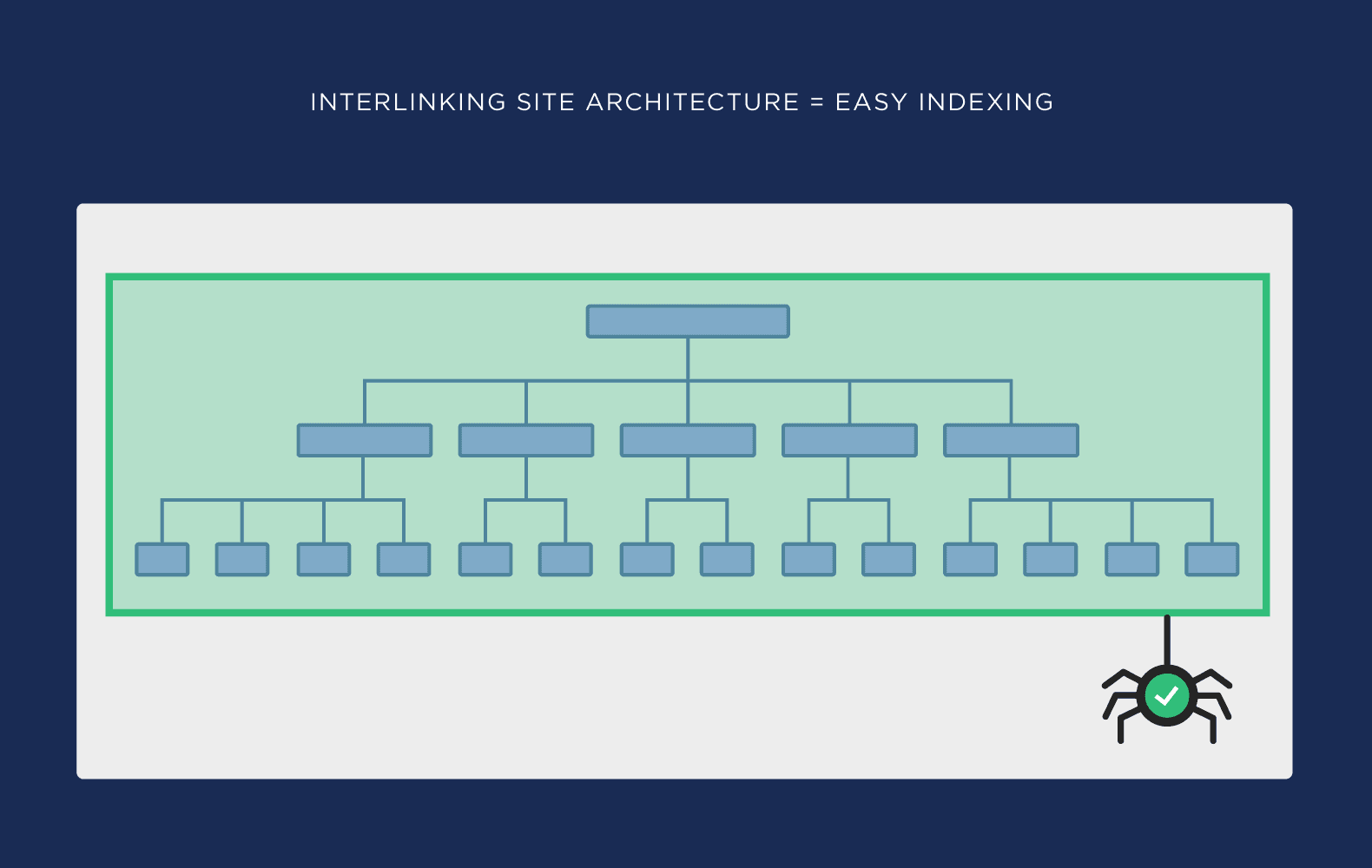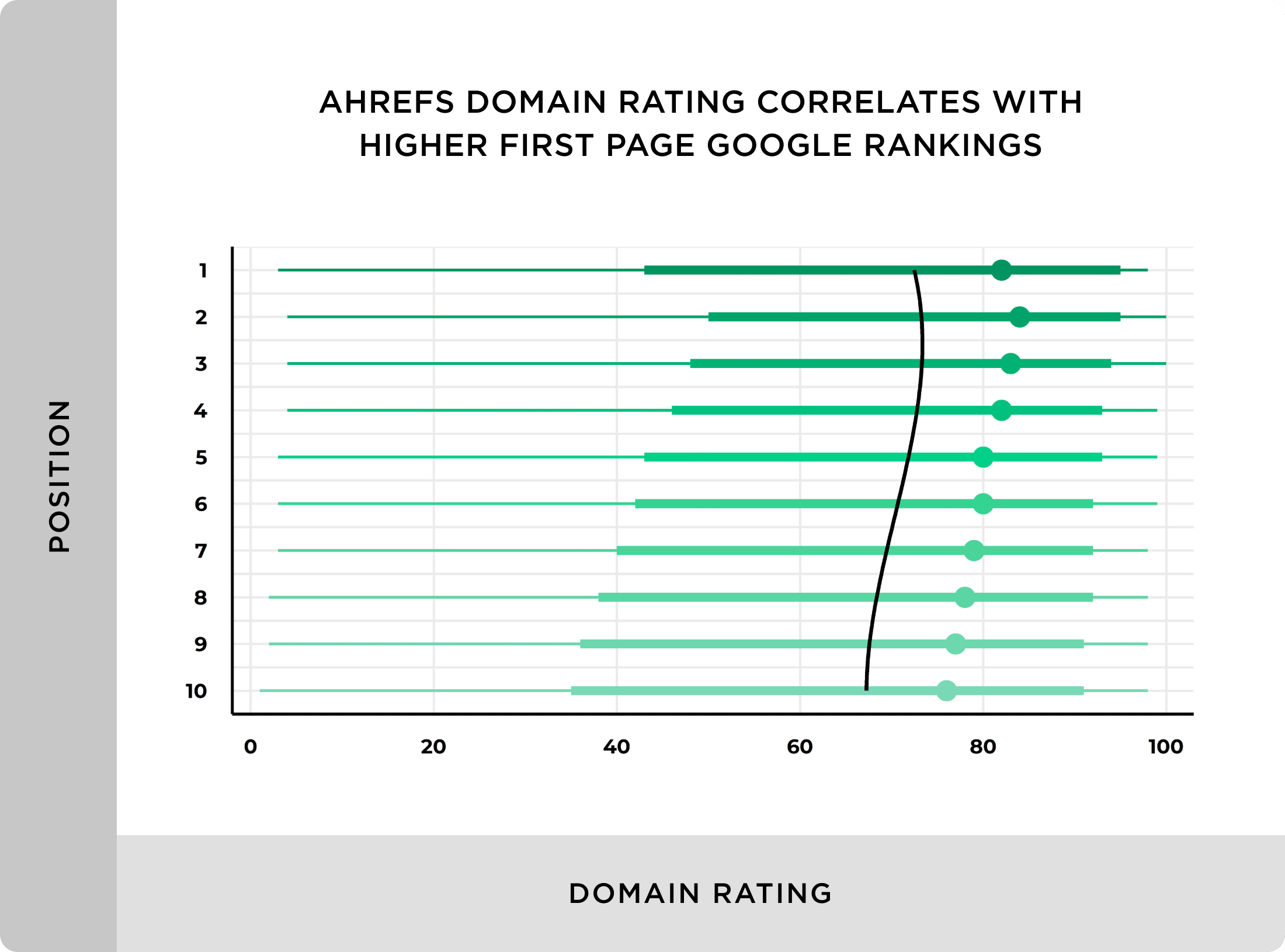Enterprise SEO
What Is Enterprise SEO?
Enterprise SEO is the practice of improving search engine rankings for a large, enterprise company. Key aspects of enterprise SEO include scaling content, ongoing technical SEO management, and automation.
Examples of websites that might need enterprise SEO include large businesses with a global presence (like Apple or Starbucks). And big ecommerce companies with tens of thousands of pages (like Nike or Adidas).
But essentially any big business with a large and/or complex website can benefit from enterprise SEO.
For example, take a look at a site like GitHub:

GitHub has over 78 million pages indexed in Google.

Many traditional SEO approaches aren’t going to work all that well on a site like that.
So, enterprise websites need to adapt some key SEO best practices when they’re optimizing thousands or millions of pages.
How is Enterprise SEO Different Than “Normal” SEO?
Here are some of the major differences between enterprise SEO and traditional SEO:
Scaling
The biggest difference between SEO for enterprise sites and “normal” sites is scale.
It’s one thing to optimize a few pages on a small site. But when you’re dealing with a site that has thousands of pages, you need to scale everything you do.
Otherwise, it’s probably not going to make a significant difference to the site’s organic traffic.
For example, internal linking is an important SEO best practice.
On a small site, internally linking from a handful of pages can make a noticeable dent in your rankings.

But a few internal links aren’t going to make a significant impact on a massive site like Amazon. Where we’re talking about millions of pages. For internal linking to work on a site like that, you need to scale things up.
That might include setting up an SEO-friendly site structure that automatically generates internal links between different areas of the site.

Or you may need to create a script that automatically adds internal links to important pages. (Or use an enterprise SEO platform like Semrush to do it all for you—more on that later.)
Either way, it’s unlikely that you’ll be able to scale internal linking on an enterprise-level site manually.
Content production is another element of SEO that enterprise sites need to scale. And this is where it becomes not just about scaling, but scaling properly.
One poorly optimized page isn’t likely to have a massive effect on your 10,000-page site. But thousands of poorly optimized pages? That’ll probably have a big impact.
If we’re talking about an ecommerce site, that usually means writing unique content for each product and category page.

If it’s a content site, then this usually includes assembling an editorial staff. And a team to optimize each page.
If the site has lots of user-generated content (UGC), then scaling content comes in the form of moderation and community-building.
For example, Backlinko is far from an enterprise-level site.
But we’ve had to assemble an entire content team just to scale content from 1 post/month to 15+ posts/month.

So yeah, a 15x increase took an entirely new process. And several new hires (including a project manager).
An enterprise website can sometimes need to 10x or even 100x its content output.
That type of scale could mean creating an entire department around content marketing. And set up systems and software to make sure you churn out high-quality content on a regular basis.
The bottom line: most SEO approaches will technically “work” on an enterprise-level site. But for those approaches to have a noticeable impact on rankings, they need to be scaled up. Big time.
More Extensive Tracking Needs
Having more pages means enterprises have greater tracking and monitoring needs than small businesses and blogs.
Implementing SEO tasks at scale is one thing. But staying on top of progress and results also becomes more difficult.
You need to be able to keep track of things like:
- Keyword rankings
- Traffic drops and increases
- Backlinks lost and gained
- Competitors
And more. For thousands or millions of pages.
Doing this yourself or with rudimentary software becomes nigh on impossible. Which is where the right tools come in.
Different SEO Tools
Enterprise sites require enterprise tools.
(Or at least higher-level plans.)
In fact, there are even dedicated enterprise SEO platforms:

Depending on the enterprise site you’re working with, you might be able to use a “normal” SEO tool. And just go to a higher plan.
They typically offer a custom plan for bigger clients.

But these custom plans aren’t (usually) the same as dedicated enterprise SEO solutions.
For example:
Semrush offers custom plans, along with a monthly Business plan at $499.95. This comes with heaps of tools and features suitable for big businesses. From keyword tracking to custom reporting on pretty much every SEO metric.
But its enterprise SEO suite takes things to the next level.
For instance, the Content Analysis Summary gives you a bird’s-eye view of your content performance. You’ll see content scores for each URL or in aggregate, helping you quickly spot which pages need some TLC.
And it’ll show your priority keywords, how your content scores against those in the SERP, and recommendations to improve your visibility.

Want to see how different clusters are performing compared to their potential? No problem.
You can set up custom forecasting for keyword clusters to see your potential traffic and revenue gains if your content ranks in target positions.

Plus, you can run extensive A/B tests from within the platform. Letting you compare the performance of different pages, keywords, segments, and custom tags.

This kind of testing is super powerful for sites that might have tens of thousands of pages to compare the performance of.
Perhaps you want to assess a new type of schema markup. Or experiment with a new article format. Or test a different product page layout.
You can do all of that with a tool like Semrush Enterprise.
Of course, Semrush isn’t the only option. Tools like Conductor and BrightEdge offer similar features.
In any case, your average SEO tool just isn’t going to cut it for an enterprise business with complex SEO needs. Dedicated platforms provide unparalleled speed, depth, and customization.
Team Buy-In
Making a change (even a small one) on an enterprise site isn’t always easy to do.
That’s because an enterprise-level site usually has multiple people (and departments) all working on the site.
For example, let’s say that you’re a marketing agency working with an enterprise SEO client. And you notice that a certain set of pages on that site have multiple H1 tags.
As you know, you only want one H1 tag per page. It’s one of those things that’s not going to kill the site’s on-page SEO. But it’s a smart thing to fix.
So you email a developer who works on the site:
“Hey Mark, I noticed that your category pages have multiple H1 tags. Can you fix that for me? Thanks.”
Sometimes the developer will be able to make that fix.
But in many cases, a change like that requires approval from stakeholders in several different departments: development, design and SEO.

Not to mention that many enterprise sites run on a custom CMS. Which means that this “simple” change can sometimes mess up multiple other parts of the site.
And that’s just changing an H1. Imagine if you want to create a script for internal linking. Or change the structure of the site to be more SEO-friendly. You’re usually talking weeks or months of meetings.
Even then, there’s no guarantee that they’ll implement your suggestion.
Take it from someone who’s worked with several large organizations:
Enterprise SEO isn’t just about scaling up SEO. Or optimizing lots of pages.
For your SEO recommendations to actually go live, you usually need to get buy-in from different departments. And specific team members.
When you do, you’ll find that your recommendations get implemented promptly. And without a lot of friction.
The secret to getting buy-in for SEO changes?
Let people know what’s in it for them.
Let’s say that you want to flatten a site’s website architecture to make it more SEO-friendly.

That’s the kind of recommendation that most developers are going to instantly resist. Especially if it’s coming from an outside SEO company.
Why?
Because it adds a lot of work to their already-busy plate.
So if you want your recommendation to have a chance, you need to position it in a way that benefits them:
“Hey Mark, I know you agree that we should re-work the site’s structure to be flatter. I also realized that this change won’t just have an SEO benefit. It will also reduce the site’s page count by about 10%. Which should reduce server strain. And make managing the site easier.”
Obviously, you’ll probably need to do more selling than that.
But when it comes to getting enterprise SEO recommendations implemented, this is the general approach you want to take.
Schema Markup
Schema Markup is another crucial element for enterprise SEO.

Implementing structured data at scale can help search engines better understand the vast amount of content on an enterprise site.
This can enhance your search visibility and enable rich results, which are particularly beneficial for large ecommerce sites, multiple locations, or sites with extensive content databases.

More Pages
As we mentioned earlier, “lots of pages” is one of the defining features of enterprise sites.
If the site has a high domain authority and publishes unique, high-quality content, then “lots of pages” can mean “lots of first page rankings.”
(Which is obviously a good thing.)
That said: a site with 10K, 100K, or even 1M+ pages can inevitably run into technical SEO issues.
Namely: duplicate content.
Sometimes this duplicate content comes in the form of carbon copies of existing pages. In other words: your site has a bunch of pages with the exact same text.

This is fairly common on ecommerce sites. Sometimes an ecommerce CMS (like Shopify) will automatically generate product or category pages. And the content on each one is exactly the same.
(In that case, you’d probably want to use the canonical tag.)
But duplicate content can also occur when you have pages on your site with similar content.

This is common with services pages that serve several different geographic areas. Or franchise businesses.
For example, you might have a service page optimized around the keyword: “catering Las Vegas.” And another optimized around “catering Boise.”
It’s going to be tough to write 100% unique content for those two pages. But it’s important to do so if you want to avoid duplicate content issues.
Another potential issue that crops up with large enterprise sites is page bloat.
Page bloat is when your site has lots of pages that basically shouldn’t be there. Maybe these are old product pages. Or company announcements that are no longer relevant. Or search result pages that are getting indexed accidentally.
(It’s easy to see how these can become common for enterprise-level websites.)
Either way, it’s important to stay on top of potential page bloat issues. Because page bloat can hurt the rankings of pages that you WANT to rank. And eat up your site’s crawl budget (which can affect indexing of new pages).

Page bloat can affect a site of any size. But in my experience, it’s more common with enterprise sites.
Why?
Enterprise sites tend to be big to begin with. So it’s easy for a bunch of low-quality pages to fly under the radar.
Second, like I mentioned before, you have lots of people and departments contributing content to the site. Many of those folks may not consider that they’re adding to page bloat issues (or even know what page bloat is).
Plus, no one in an enterprise company is usually “in charge” of keeping an eye on page bloat. Sometimes it falls on the dev team. Other times, it’s the SEO manager.
But there’s no doubt that these kinds of issues are common on enterprise sites.
Keyword Research and Selection
One of the great things about working with enterprise sites is that they can often target competitive keywords. And successfully rank for them.
That’s because many enterprise sites have high authority. Simply by being a big brand.
For example, Booking.com does barely any content marketing. Despite that, their domain has 1.4 billion backlinks from 379K domains.

And if they ever wanted to go all-in with content marketing, they’d have a HUGE head start over their smaller competitors.
That’s because, all things being equal, sites with a high domain authority will usually rank above those with lower domain authority.

That’s not to say that enterprise sites can’t target long-tail keywords.
But unlike most smaller sites, they can ALSO target highly-competitive head terms too. Which just often isn’t possible for smaller sites, at least not those with limited authority.
Unique Backlink Opportunities
Enterprise sites can tap into the same set of link building strategies that any website can.
But they have a few opportunities for building backlinks that many sites don’t.
For example, enterprise sites can often build links at scale from unlinked brand mentions.
Unlinked brand mentions are just like they sound: they’re when another site mentions a brand, without linking to it.

A popular (and effective) link building strategy is to reach out to the people that mentioned the brand without linking. And ask them to add a link.
Because the person already mentioned your brand, they’re much more likely to add a link. After all, they mentioned your brand for a reason. So it’s not a hard sell to go in and add a quick link.
Smaller sites may get 5-10 of these brand mentions per month.
But a big brand enterprise site? They can sometimes get 500+ unlinked mentions every month.
And every one of those mentions is a potential backlink.
Marketing Teams
Most SMBs typically have a dedicated digital marketing team.
That team usually handles the gamut of marketing tasks: search engine optimization, social media, content, conversion rate optimization, email marketing, and PPC.
But enterprise sites are usually structured a little bit differently.
Instead of a single team, most enterprise-level companies have several different marketing departments. Each with their own in-house team.

When it comes to enterprise SEO, this approach has its pros and cons.
That’s because SEO tends to “touch” several different areas of digital marketing.
And if SEO is completely siloed from the rest of the marketing departments, it’s going to hurt that site’s ability to rank.
For example, let’s say that the SEO team wants to rank for a specific keyword in Google’s organic search results. For that to happen, the SEO team will need to coordinate with several different departments: content, development, and design to name a few.
If those departments all work together well, that content can be written, published and promoted in a week. If not, it can take months for the content to actually go live.
It’s obviously smart to have marketing departments that specialize in different areas. This is why most enterprise sites have this structure.
But if they work together like a well-oiled machine, it can help a site’s enterprise SEO strategy get implemented fast and efficiently.
How to Build a Winning Enterprise SEO Strategy
A lot of work goes into forming any SEO strategy, let alone an enterprise-level one.
So how do you get started?
First, you need to define your business’s goals and KPIs (i.e., how you’ll measure what’s working).
Then, you need to consider the approach you’ll take:
- Will you do the work with your existing team?
- Are you planning to outsource it to an agency?
- Would an all-in-one solution suit you best?
The first option can work well if you already have an extensive team with various departments to handle all the different aspects of a successful enterprise SEO strategy.
And outsourcing can take a lot of the pressure off. But it will come at a cost. And you won’t have control over who is working on what tasks.
That’s why the enterprise SEO platform route is a popular choice.
It lets you take advantage of the platform’s resources to scale your SEO activities, tracking, and reporting.
And with a platform like Semrush Enterprise, you can still get access to (real) expert help as and when you need it.

This makes it a powerful but flexible choice for enterprise businesses of all sizes.
Check out Semrush Enterprise to scale, automate, and transform your enterprise SEO efforts.
Learn More
Measuring SEO Results: Guide to making sure your SEO efforts are bringing in real, tangible results (in the form of metrics that matter: higher Google rankings, more organic traffic, and an increase in revenue).
Building an SEO Team: Learn how to structure an SEO team from scratch.
The Digital Marketing Templates Library: Collection of templates that enterprise SEO teams can use for content creation, optimizing content, promoting on social media, and more.
